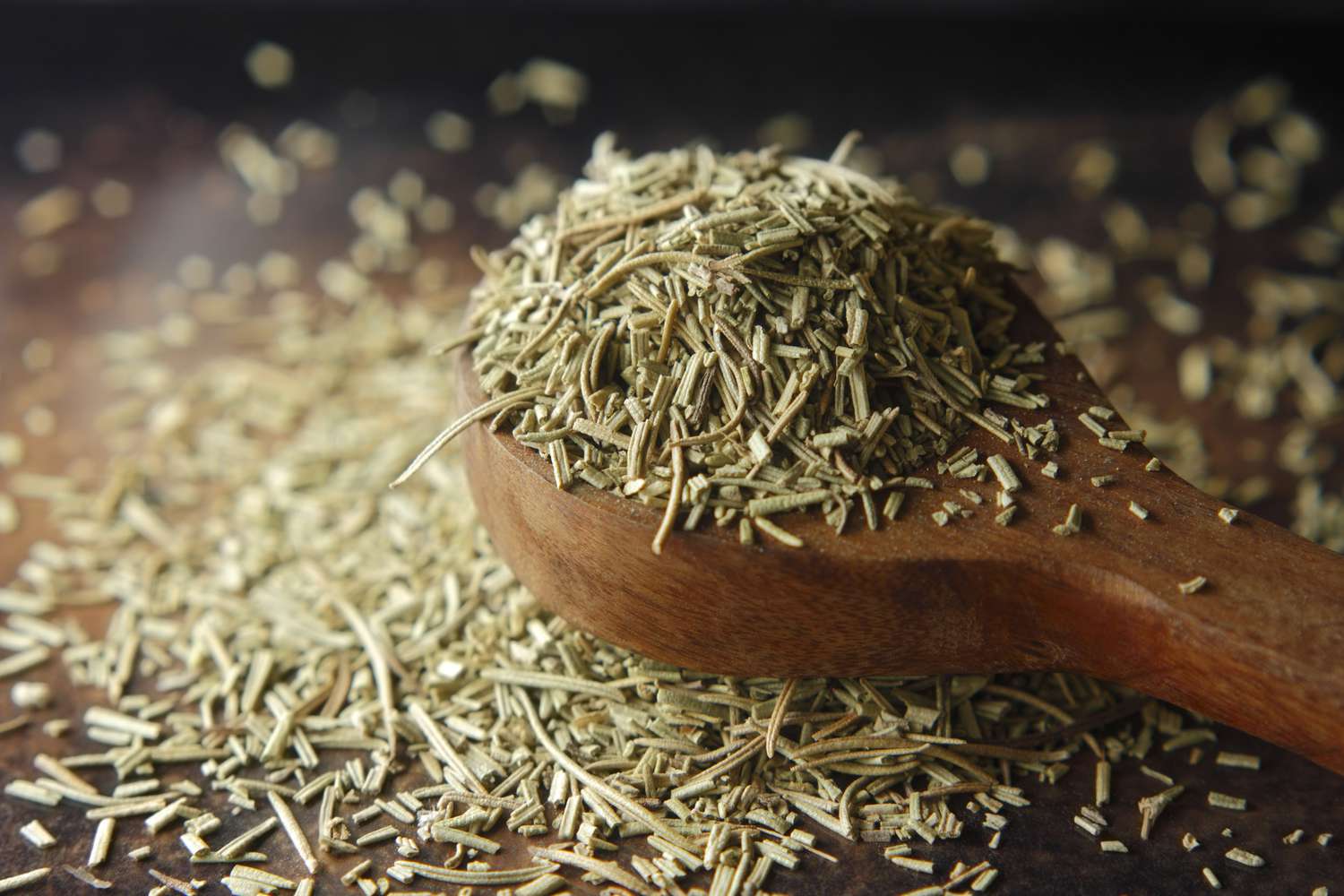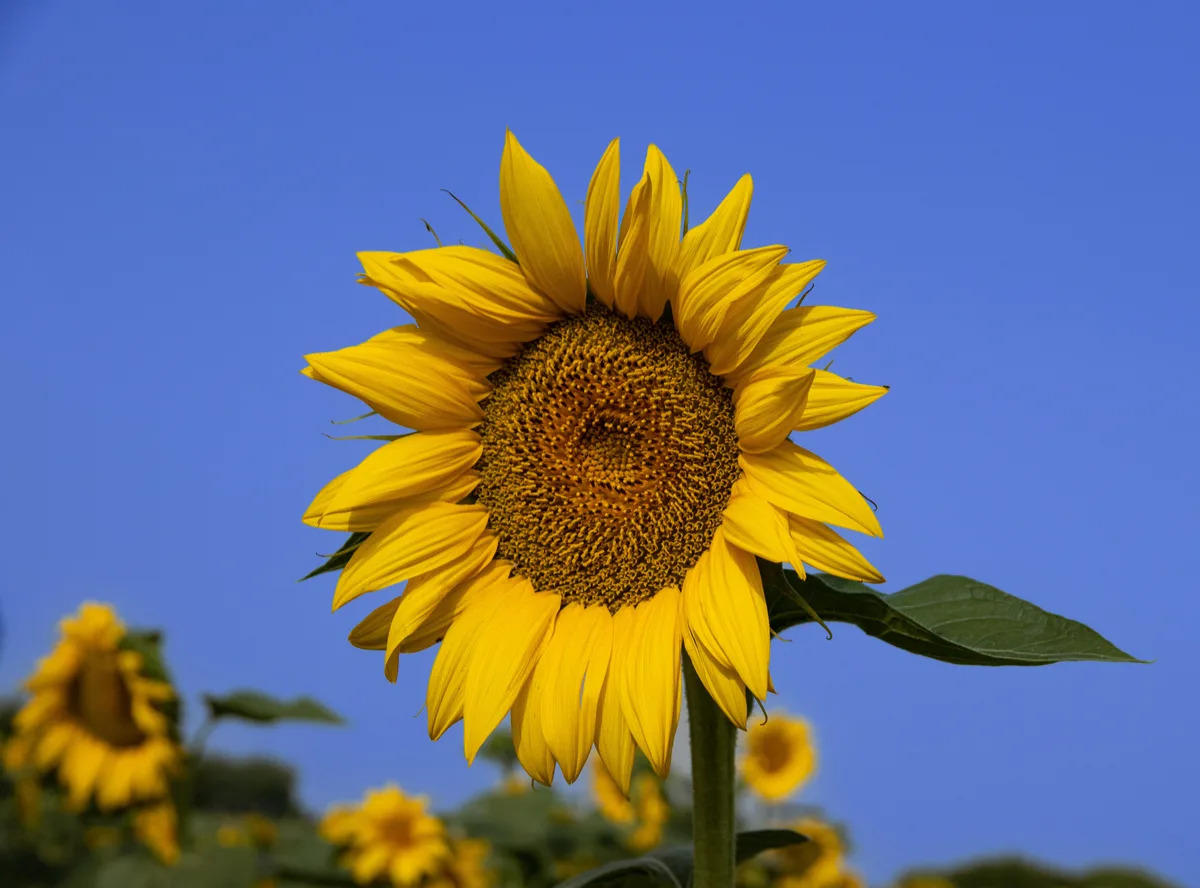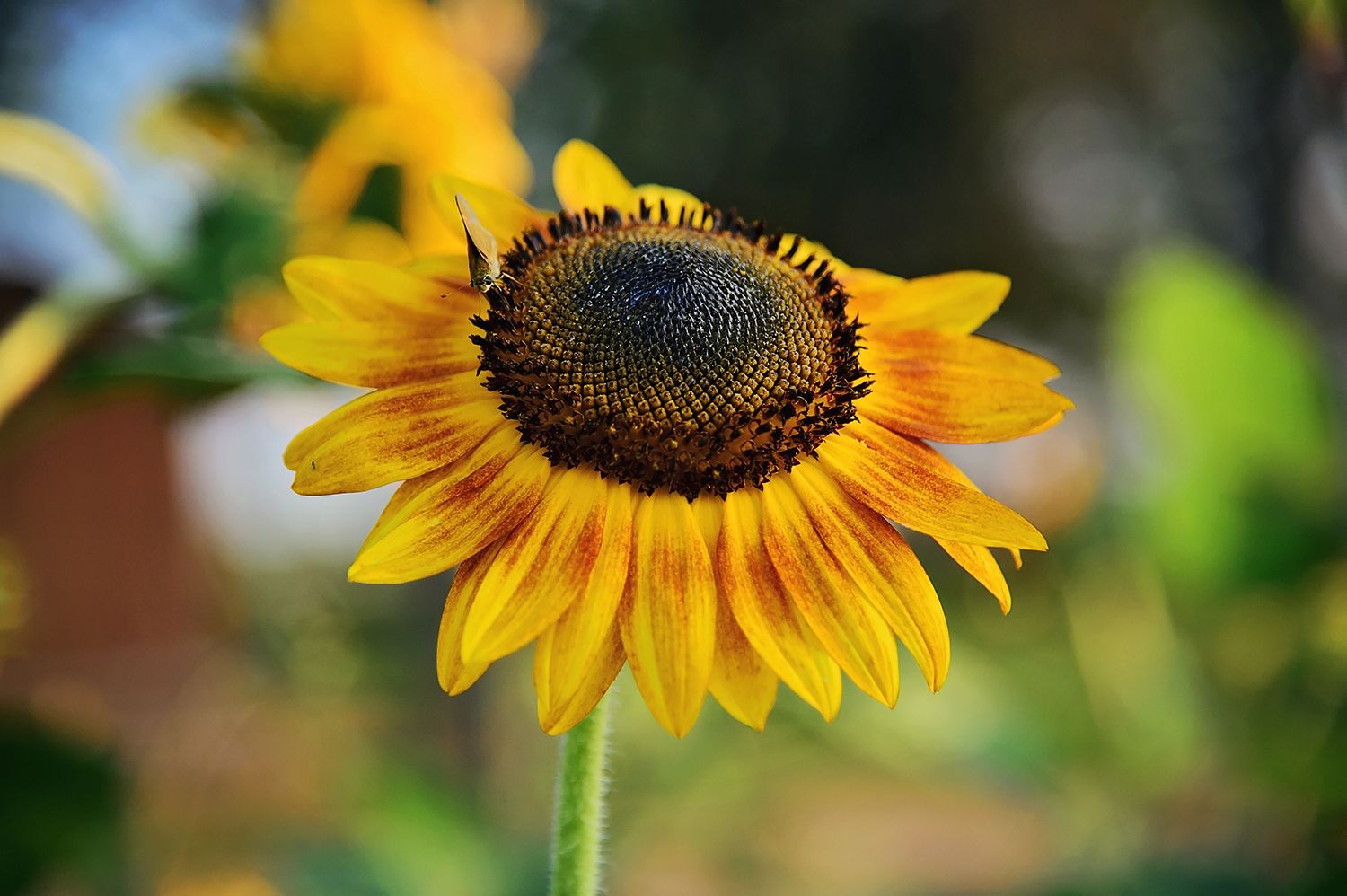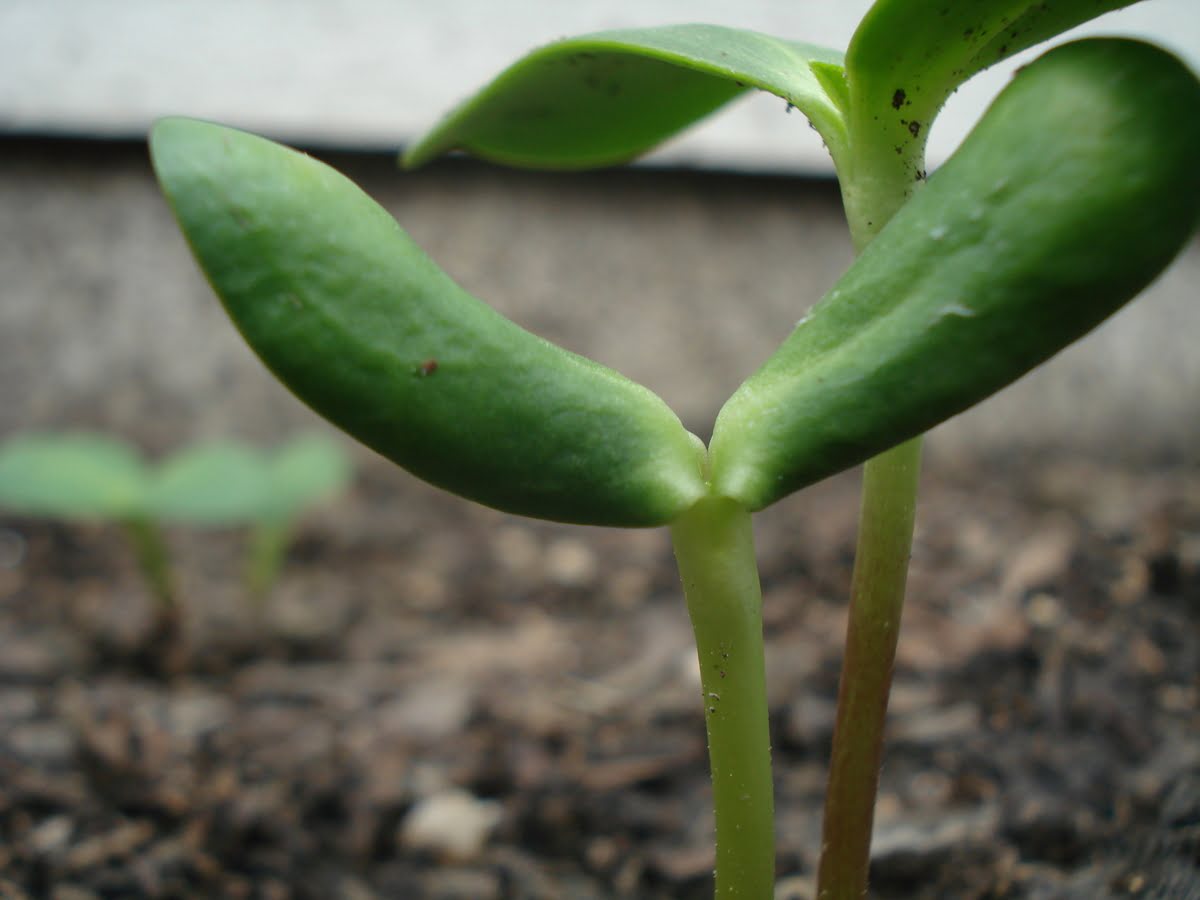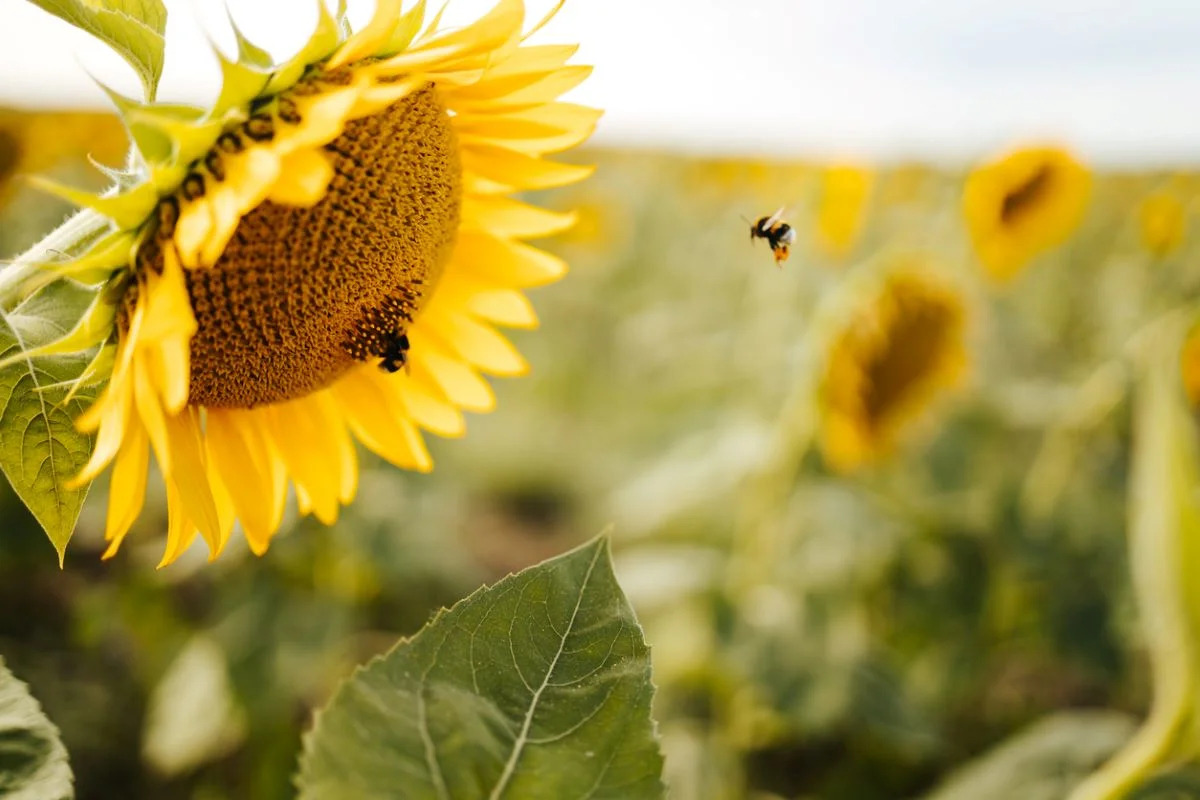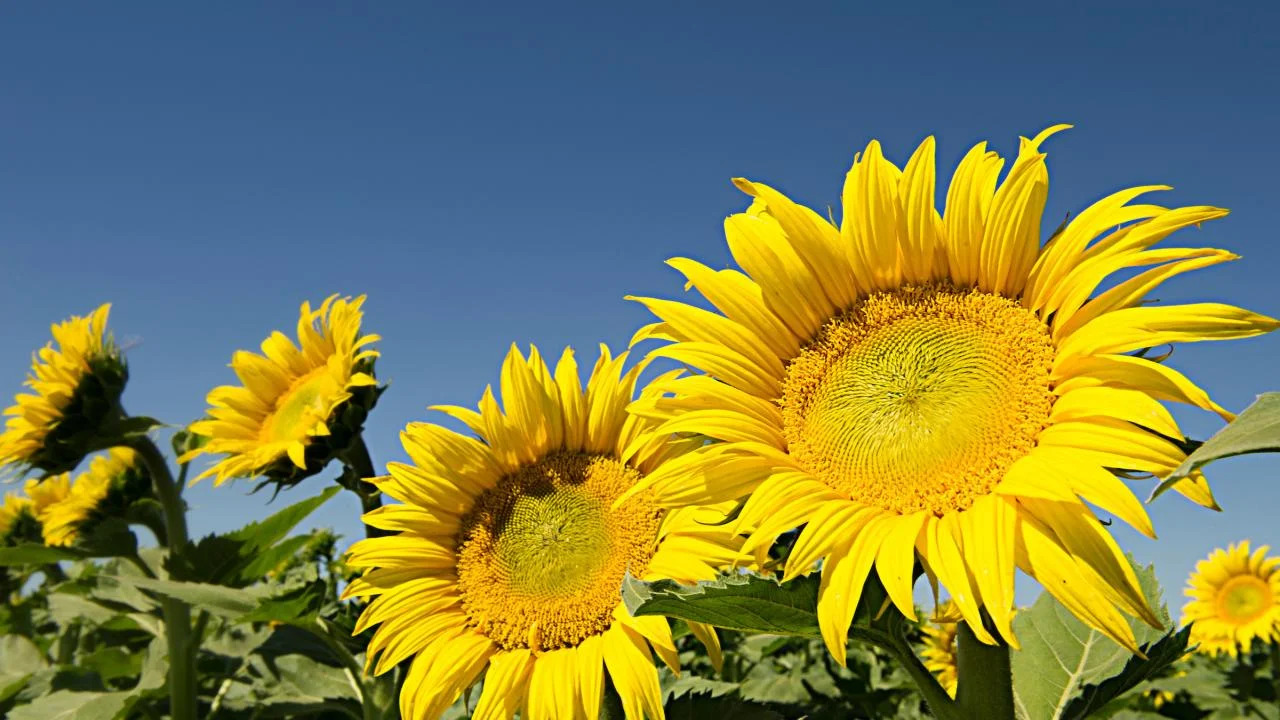Home>Types of Gardening>Ornamental Gardening>What To Do With Sunflowers At The End Of The Season


Ornamental Gardening
What To Do With Sunflowers At The End Of The Season
Modified: January 22, 2024
Discover creative ways to utilize sunflowers in your ornamental gardening at the end of the season. From stunning flower arrangements to tasty seed harvest, make the most of these vibrant blooms.
(Many of the links in this article redirect to a specific reviewed product. Your purchase of these products through affiliate links helps to generate commission for Chicagolandgardening.com, at no extra cost. Learn more)
Table of Contents
Introduction
Welcome to the enchanting world of ornamental gardening! If you have a passion for cultivating beautiful and vibrant gardens, then ornamental gardening is the perfect avenue for you to explore. Ornamental gardening focuses on growing plants for their aesthetic appeal, bringing color, texture, and visual interest to outdoor spaces.
One of the most popular and beloved flowers in ornamental gardening is the sunflower. With its striking yellow petals and towering height, the sunflower never fails to captivate both gardeners and passersby alike. Sunflowers not only add a touch of charm to any garden, but they also offer a plethora of possibilities once the growing season comes to an end.
In this article, we will delve into the various ways you can make the most out of your sunflowers at the end of the season. From harvesting and saving sunflower seeds to using the stalks for composting and creating crafts with the petals, we will explore a wide range of practical and creative ideas to help you make the most of your sunflowers.
Whether you are a seasoned gardener looking to expand your knowledge or a beginner eager to learn new techniques, this article will provide you with valuable insights and inspiration. So, let’s dive in and discover the possibilities awaiting you at the end of the sunflower season!
Harvesting Sunflower Seeds
As the vibrant yellow petals of your sunflowers start to wilt and fall, it’s time to harvest the seeds. Sunflower seeds are not only a tasty snack, but they can also be used for various purposes such as bird feed and even oil extraction.
To harvest sunflower seeds, you’ll want to wait until the back of the flower head turns brown and the seeds appear plump and mature. Gently bend the flower head downwards and cut it off with a pair of pruners or sharp scissors.
Next, remove any remaining petals and large debris from the flower head. Shake the flower head gently to loosen the seeds. You’ll notice that the seeds are nestled in tightly packed rows. To extract them, rub your hand along the rows, applying light pressure to release the seeds.
Once you have separated the seeds from the flower head, it’s important to thoroughly dry them before storage or further use. Spread the seeds out on a clean, flat surface, ensuring that they are in a single layer. Place them in a well-ventilated area with low humidity, away from direct sunlight. Allow the seeds to dry for about two weeks or until they feel dry and crisp to the touch.
Now that you have harvested and dried your sunflower seeds, there are several exciting options for what to do with them. Let’s explore some of these possibilities in the following sections.
Saving Sunflower Seeds
Once you have completed the process of harvesting sunflower seeds, you may want to save them for future planting or sharing with fellow gardeners. Saving sunflower seeds ensures that you have a continuous supply of these beautiful flowers and allows you to preserve the unique characteristics of specific sunflower varieties.
To save sunflower seeds, begin by thoroughly cleaning them. Remove any remaining debris, such as flower petals or chaff, and separate the viable seeds from any damaged or shriveled ones. Place the clean seeds in a dry container or envelope, labeling them with the sunflower variety and harvesting date.
Proper storage is crucial for maintaining the viability of sunflower seeds. Choose a cool, dark, and dry location to store the seeds, such as a pantry or basement. It’s important to keep them away from moisture and extreme temperatures, as this can significantly reduce their ability to germinate.
As a general rule, sunflower seeds can be stored for up to five years with proper care. However, it’s a good idea to perform a germination test before planting saved seeds. To do this, place a few seeds between damp paper towels and keep them in a warm location. If the majority of the seeds germinate within a week or two, you can confidently use them for planting.
Don’t forget to save some of your sunflower seeds for future enjoyment. These nutritious and delicious snacks can be roasted, seasoned, and enjoyed as a tasty treat. Roasting sunflower seeds brings out their natural nutty flavor and makes for a satisfying snack during those cozy winter evenings.
In the next section, we will explore the process of roasting sunflower seeds and how to transform them into a flavorful and addictive snack.
Roasting Sunflower Seeds
Roasting sunflower seeds is a delightful way to enjoy their nutty flavor and add a crunchy element to your snacks and meals. Whether you want a savory or sweet flavor profile, roasted sunflower seeds can be seasoned to suit your taste preferences.
To roast sunflower seeds, start by preheating your oven to 350°F (175°C). In a bowl, combine your cleaned and dried sunflower seeds with a drizzle of oil and your choice of seasonings. For a savory option, try salt, garlic powder, paprika, or even a dash of chili powder. If you prefer a sweeter flavor, experiment with cinnamon, sugar, or honey.
Spread the seasoned sunflower seeds on a baking sheet in a single layer. Place the baking sheet in the preheated oven and roast for about 10 to 15 minutes, or until the seeds turn golden brown. Keep a close eye on them, as they can quickly go from perfectly roasted to burnt.
Once the sunflower seeds are roasted to perfection, remove them from the oven and let them cool completely. As they cool, they will become even more crunchy and delicious.
Roasted sunflower seeds can be enjoyed on their own as a tasty snack or used as a versatile ingredient in various dishes. Sprinkle them over salads, add them to trail mixes, or incorporate them into your baking recipes for an extra burst of flavor and texture.
If you find yourself with an abundance of roasted sunflower seeds, consider sharing them with friends and family. Package them in decorative bags or jars and give them as thoughtful homemade gifts.
Now that you know how to roast sunflower seeds and savor their delectable flavor, let’s move on to another exciting way to utilize sunflowers. In the next section, we will explore how you can provide nourishment and joy to your feathered friends by feeding them sunflower seeds.
Feeding Birds with Sunflowers
Sunflowers not only bring beauty and cheerfulness to your garden, but they also provide a valuable food source for birds. By leaving the dried sunflower heads intact in your garden, you can attract a variety of birds and provide them with nourishment.
Birds such as finches, sparrows, and chickadees are particularly fond of sunflower seeds. To make the seeds easily accessible for them, leave the flower heads on the stalks and place them in bird feeders or hang them in your garden. Alternatively, you can simply scatter the sunflower heads on the ground.
Watching the birds flock to your garden and enjoy the sunflower seeds can be a rewarding and delightful experience. Not only are you providing them with a source of sustenance, but you are also creating a natural and harmonious environment that benefits both birds and humans.
Feeding birds with sunflower seeds is not only beneficial for the birds themselves, but it also contributes to the overall ecosystem of your garden. As the birds feast on the seeds, they may inadvertently help with pollination by transferring pollen from one flower to another.
Additionally, the presence of birds in your garden can help control pests that may damage your plants. Birds are natural predators of insects and can greatly reduce the population of unwanted pests, such as aphids or caterpillars, protecting your precious ornamental plants.
By providing a reliable food source for birds through the sunflower seeds, you can create an inviting and thriving garden ecosystem that fosters biodiversity and harmony.
Now that we have explored the importance of feeding birds with sunflower seeds, let’s delve into another fascinating use of sunflowers – extracting and making your own sunflower oil. This versatile and healthy oil can be used for cooking and various other purposes. Find out how in the next section.
Making Sunflower Oil
Did you know that you can extract your own sunflower oil right at home? Making sunflower oil not only allows you to enjoy the health benefits of this versatile oil, but it’s also a rewarding and satisfying process.
To begin, you will need a supply of sunflower seeds. Ensure that the seeds are clean and free from any debris or moisture. You can use the seeds you harvested from your own sunflowers or purchase them from a local store.
There are two common methods for extracting sunflower oil—cold-pressing and hot-pressing. Cold-pressing involves gently pressing the sunflower seeds to extract the oil, preserving its natural nutrients and flavors. Hot-pressing, on the other hand, involves heating the seeds to higher temperatures before pressing them.
If you prefer a more straightforward method, cold-pressing is the way to go. Start by grinding the sunflower seeds using a mortar and pestle or a blender until they turn into a fine powder. Transfer the ground seeds to a clean cloth or cheesecloth and squeeze out the oil over a clean container. Allow the oil to settle for a few hours to separate from any sediment or impurities.
If you’re up for a more involved process, you can opt for hot-pressing. Heat the sunflower seeds in a pan or oven to about 120°F (49°C) for a few minutes. Once heated, use a mechanical press to extract the oil. Ensure that you strain the oil through a fine cloth or filter to remove any remaining particles.
Once you have successfully extracted the sunflower oil, store it in a dark-colored glass bottle or container in a cool, dark place. Sunflower oil has a relatively long shelf life and can be used for cooking, baking, salad dressings, or even in homemade beauty products.
Making your own sunflower oil allows you to control the quality and source of the oil, providing you with a sense of satisfaction and a healthier option for your culinary needs.
Now that you know how to make your own sunflower oil, let’s explore how you can repurpose the leftover sunflower stalks through composting in the next section.
Composting Sunflower Stalks
Once the growing season for your sunflowers is over, don’t let the stalks go to waste. Composting sunflower stalks is not only a sustainable way to dispose of the plant material, but it also enriches your compost pile and returns valuable nutrients back to the soil.
Before composting the sunflower stalks, it’s essential to prepare them for decomposition. Start by cutting the stalks into smaller pieces to facilitate faster breakdown. You can use pruning shears or a sharp knife for this task. Remove any remaining leaves or flowers on the stalks and set them aside for separate composting or other uses.
Add the chopped sunflower stalks to your compost pile or bin along with other organic matter, such as kitchen scraps, grass clippings, and fallen leaves. The stalks provide a great source of carbon, balancing the nitrogen-rich materials in your compost mix.
It’s crucial to create the right balance of carbon and nitrogen in your compost pile to ensure proper decomposition. Aim for a ratio of about 3 parts carbon (e.g., dried leaves, straw) to 1 part nitrogen (e.g., vegetable scraps, grass clippings). This balance encourages the growth of beneficial microorganisms and speeds up the decomposition process.
Remember to turn your compost pile regularly to provide aeration and mix the materials. This promotes the breakdown of the sunflower stalks and other compostables, resulting in nutrient-rich compost for your garden.
Once the composting process is complete, you can use the finished compost to enrich your soil. Spread it around your garden beds, mix it into potting soil, or even use it as a top dressing for existing plants. The nutrients released from the decomposed sunflower stalks will benefit your plants, promoting healthy growth and vitality.
By composting your sunflower stalks, you close the loop in the life cycle of your sunflowers, minimizing waste and contributing to the health of your garden ecosystem.
Now that we have explored the environmentally-friendly practice of composting sunflower stalks, let’s move on to the final section of our article—using sunflower petals for various crafts and decorations.
Using Sunflower Petals for Crafts
Sunflower petals, with their vibrant yellow hues and delicate texture, can be repurposed for a variety of crafts and decorations. Whether you want to create homemade cards, pressed flower art, or natural dyes, the petals of sunflowers offer endless creative possibilities.
One popular craft idea is to make sunflower petal paper. Simply collect a handful of sunflower petals and blend them in a food processor or blender with some water to create a pulp. Spread the pulp onto a screen or mesh surface, pressing out the excess water. Allow it to dry completely, and you’ll have beautiful and unique paper embedded with the essence of sunflowers.
If you enjoy pressing flowers, sunflower petals make an excellent addition to a collection. Carefully place the petals between the pages of a thick book or a flower press and leave them to dry for a few weeks. Once dried, the petals can be used to create framed art, handmade bookmarks, or even incorporated into resin jewelry.
Another creative idea is to use sunflower petals for natural dyeing. Simmer the petals in a pot of water for about an hour to extract their color. Strain the liquid, and you now have a dye bath that can be used to color fabrics, yarn, or even Easter eggs. Experiment with different concentrations and combinations to achieve various shades and effects.
If you’re into candle making, you can also embed sunflower petals into homemade candles for a touch of natural beauty. Simply decorate the inside of the candle molds with a layer of petals before pouring in the melted wax. Once the wax solidifies, you’ll have stunning sunflower petal candles that can bring warmth and ambiance to any space.
When it comes to crafting with sunflower petals, the possibilities are limited only by your imagination. Whether you’re creating handmade cards, decorative wreaths, or unique gift tags, the bright and cheerful petals of sunflowers add a whimsical and natural touch to your creations.
Now that you have discovered the multitude of crafts you can create with sunflower petals, it’s time to put your creativity to work and add a charming and personalized touch to your home and gifts.
Conclusion
Ornamental gardening is not only a way to beautify your outdoor space, but it also opens up a world of possibilities even after the growing season ends. Sunflowers, with their awe-inspiring beauty and versatility, offer a treasure trove of opportunities for you to explore.
From harvesting and saving seeds to roasting them for a tasty snack, sunflowers provide a delicious and nutritious treat that can be enjoyed by humans and birds alike. Additionally, the leftover stalks can be composted, enriching the soil and ensuring a sustainable gardening practice.
If you’re feeling creative, sunflower petals can be repurposed for various crafts and decorations, embellishing everything from homemade paper to candles and even natural dyes. This allows you to infuse your artistic touch and bring the beauty of sunflowers into your home and gift-giving.
So, whether you’re an experienced gardener or just starting your journey into the world of ornamental gardening, remember that the end of the sunflower season is not the end of the story. Embrace the possibilities and make the most of your sunflowers, turning them into seeds, snacks, oil, decor, and more.
As you continue on your gardening adventure, don’t limit yourself to the traditional uses of plants. Explore, experiment, and let your creativity flourish in the vibrant landscape of ornamental gardening. Get ready to reap the rewards of your efforts and enjoy the enchanting beauty of sunflowers throughout the year.
